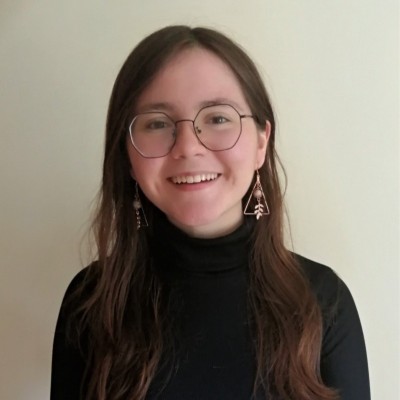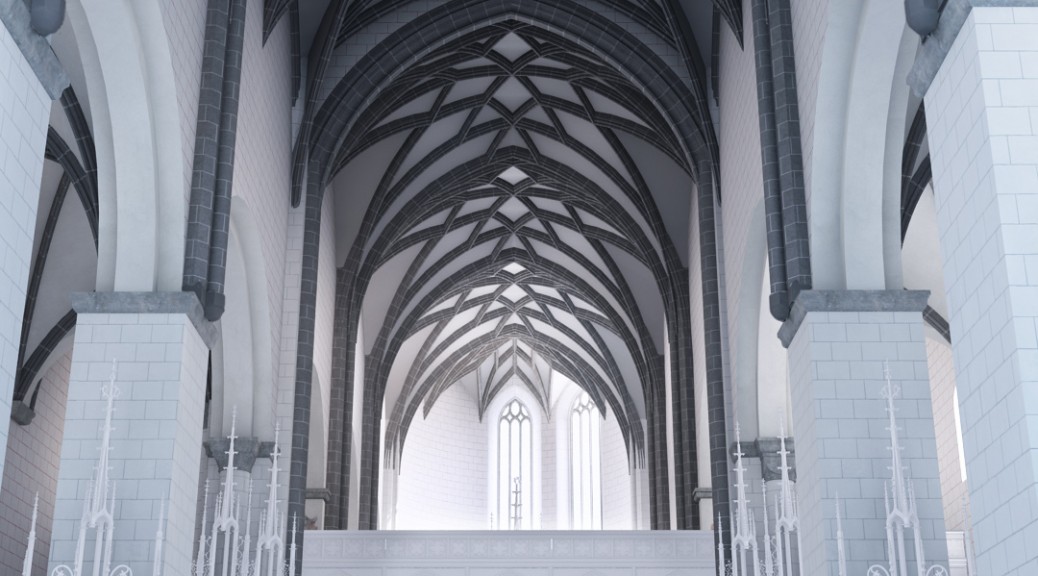Last summer Emma Hobson-White joined us under the University of Liverpool’s Graduate Research Intern Scheme (GRIS). Here she explains here experiences on the project:
I have been fascinated with the work of Tracing the Past since 2017, when I attended an Architecture Applicant Day at the University of Liverpool and Dr Nick Webb spoke about the project’s findings. As someone who has always been intrigued by the ornate designs of vaults, it was one of the reasons I joined the university for my undergraduate degree. So, when the opportunity to intern with the team came up this summer, I was eager to join.
The focus of my work was to disseminate the teams’ research and understand how traction to the website and work could be improved. My work began with reading Digital Analysis of Vaults in English Medieval Architecture as well as several articles and conference papers. Seeing how the research had expanded and hypotheses changed over time, I learnt early on that some assumptions made by previous scholars were not always correct, but the use of digital technologies has enabled a greater appreciation for Master Masons skillset and increased our understanding for how these complex designs came to be.
Concurrently I analysed analytics from the website, Sketchfab, social media, and various talks and workshops. Perhaps the most curious finding was that the audience for the research has rarely been academics and educators: instead, it has been local community members, visitors, and church volunteers. These groups stated they were eager to learn more about the construction and designing of vaults, just as I had always been. Understanding this may lead to an adjustment to how information is presented in the future, how to best utilise digital platforms at hand, and also considering methods to reach an academic audience.
Surprisingly, despite how important the team’s research has been, relevant Wikipedia entries did not link to their work. That was where the later weeks focused: re-writing research in an accessible, non-academic style in order to reach as many people as possible via Wikipedia. It is so important that accurate information is available to all, and Wikipedia is often the first page people will go to understand a topic. So many of these pages cited a single reference, led to dead links, or were just copy-and-pasted texts from an academic book that was confusing and oftentimes irrelevant. Some pages were littered with mistakes, like Chester wherein it was mistakenly said that only the Lady’s Chapel was made of stone – misinformation like this can change how people read buildings. As a result, I found myself cleaning up articles to make them succinct and appropriate, so that future readers would not have to scratch their heads the way I had been.
Dissecting findings from Tracing the Past research and making it relevant to the wider audiences was a challenge at times. For instance, information on how 3D scans invalidated some theories of the vault design process would be inappropriate on a general page about one of the churches, but worth adding to pages about historical architecture laser scans. Some articles lacked even the most basic architectural section – such as Tewksbury and Exeter. In such instances, the Case Study overview pages from the book came very much in hand, with simple succinct descriptions of the architectural histories with plenty of other sources to support details. Graphics made for the new book explained components of vaults far better than paragraphs of text made by previous users – it is not uncommon to hear in architecture classes that diagrams explain concepts best, and it held true here.
Through adding more information from Tracing the Past, I hope that people who wish to learn more about these historic sites now can read Wikipedia pages with greater ease, with details about the vaults previously unmentioned or inaccurately accounted for, and can readily find a resource to enable them to delve deeper into this topic. It is something that I know I would have appreciated being done with my initial interest in the subject area, and it is clear from the analytics that many others will benefit. In learning about architectural history we can better appreciate the complexity, the daring, and the beauty of the geometric designs. I cannot wait to learn more, and I am excited to see what will be found out in the future through 3D technologies by this team and others around the globe.
I would like to thank Dr Alexandrina Buchanan and Dr Nick Webb for the internship, working on this has been deeply interesting and a joy to fully dive into the research that I have always been curious about.
Emma Hobson-White


